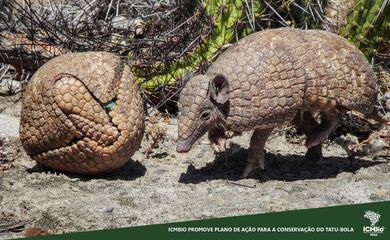Biologist launches petition to protect three-banded armadillos
More than 160,000 people have signed a document calling for the creation of a national park as a legacy of the World Soccer Cup to protect three-banded armadillos. The endangered species was chosen as a mascot of the tournament under the name Fuleco. The petition was submitted to the head of the Chico Mendes Institute for Biodiversity Conservation (ICMBio), Sérgio Brant, on Wednesday (July 2).

After publishing a research paper alongside fellow researchers showing the contradiction between the choice of an endangered species to lend its face to the biggest sporting event on Earth and the poor investment made to protect it, biologist Felipe Melo, a professor at the Federal University of Pernambuco (UFPE), has launched a petition to create a national park in the Caatinga ecosystem dedicated to the conservation of the Tolypeutes tricinctus, the three-banded armadillo.
In an expedition to the Caatinga, the group of researchers found that hunting armadillos is still part of the local culture. “We'd go around asking local children who among them had had armadillo as a meal in the past year, and they would all raise their hands,” Melo said. He warned that the armadillo is “a breeding ground for Hansen's disease”, and that eating its meat, in addition to posing a threat to its survival as a species, also carries the risk of infection.
Melo explained that the Caatinga is unique to Brazil, and the most vulnerable among its ecosystems. Destroying this biome – which along with the Cerrado is home to the three-banded armadillos – can also lead to their extinction. In their natural environment, they have the role of moving soil nutrients around, controlling the presence of ants, and serving as food for big cats.
According to the Ministry of Environment, the Caatinga extends over about 844,453 square kilometers, an area equivalent to 11% of the national territory. Rich in biodiversity, the biome is home to 178 species of mammals, 591 birds, 177 reptiles, 79 amphibians, 241 fish, and 221 bees. About 27 million people live there, and most of them are poor and depend on its natural resources to survive.
Translated by Mayra Borges
Fonte: Biologist launches petition to protect three-banded armadillos



